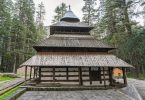We have all witnessed the barren skiing meadows of Kashmir and Auli. The winter wonderlands of major Himalayan regions have transformed into brown this winter, leaving us confused about what is happening with all the snow that was supposed to fall. The western Himalayan region logged an 80 percent precipitation deficit in December, and January so far has been almost dry, with the India Meteorological Department attributing it to the lack of active western disturbances this winter season. The time between December 21 to January 21 is generally the time of heavy snowfall, but contrastingly, this year the patterns of snowfall have been broken.
Let’s analyze the reasons, consequences, and the way forward to deal with the crisis.
Reasons for Low Snowfall in 2024

There are multiple reasons for the deficit in snowfall, and recent trends indicate a consistent decline in snowfall. It is crucial to understand the factors contributing to this phenomenon. Firstly, there has been a significant decrease in the number and intensity of western disturbances, resulting in less snowfall. Western disturbances, originating from the Mediterranean Sea, carry moisture and are the primary source of winter precipitation in the Himalayas. Secondly, the subtropical westerly jet stream, responsible for winter precipitation, remained further north than usual this year, reducing moisture reaching the Himalayas and causing diminished snowfall. Thirdly, the overall warming trend due to climate change is likely playing a role, leading to higher average temperatures even during winter.
What does this mean?

The reduced or nonexistent snowfall in the Himalayas will have both short and long-term implications for the region and the surrounding lower areas. Insufficient snowfall will contribute to water scarcity, accelerating glacier melting, raising sea levels, and affecting river flow patterns. Additionally, snow cover acts as an insulator for the soil, protecting it from extreme temperatures. The absence of snow exposes the soil to harsh winters. The climate is warming rapidly, as seen in this winter without snowfall. Despite being peak winter, Ladakh and Kashmir experienced unusually warm temperatures, resulting in early crop blooming. This premature flowering will impact the fruiting capacity of plants, particularly affecting the horticulture industry, which relies on a chilly climate for flourishing. Important ingredients of the local economy, such as apple and saffron yields, are severely affected by the absence of snowfall.
The low snowfall has also impacted the tourism industry. Gulmarg, a key winter tourism spot in Kashmir, is witnessing a sharp decline in tourist visits this season due to insufficient snow. Despite substantial tourist numbers in 2023, officials project at least a 60% reduction in footfall. The scarcity of snow is adversely affecting ski resorts and related businesses, thereby impacting the local economy.
Way Forward: Adaptation and Mitigation

The topic of climate adaptation lags far behind. In the recently concluded 28th Climate Conference of Parties or COP28, it marked the first time the draft of the Global Goal on Adaptation was released. It aims at “enhancing adaptive capacity, strengthening resilience, and reducing vulnerability to climate change,” according to the United Nations Framework Convention on Climate Change. However, the most crucial aspect to focus on is climate literacy and awareness. It is essential to understand the risks and challenges associated with global warming. It is necessary to address that what you do at your home in Delhi, Mumbai, or Bangalore will impact paradises like hill stations such as Shimla and Manali. If we fail to act according to the situation, it will spoil our escape mountains that we run into for times of refreshment and rejuvenation.
Where can I see snow now?

While discussing the reduced snowfall in the Himalayas, it is important to note down the destinations where you can witness snow:
- Manali Solang: Experience the magic of Manali and Solang while enjoying snow activities and sipping hot chai.
- Spiti: The land of lamas, famous for offering chilly winter vibes, will amuse you with fresh white snow.
- Kedarkantha: The majestic trek known as the queen of winter treks will provide breathtaking views of the Himalayan mountains.
- Chopta Chandrashila: Witness the highest Shiva temple in Tungnath and mesmerizing mountain views.
- Sikkim: The hidden gem of North East India that will give you snowy vibes and unlimited fun.
It’s time to act and be responsible…







